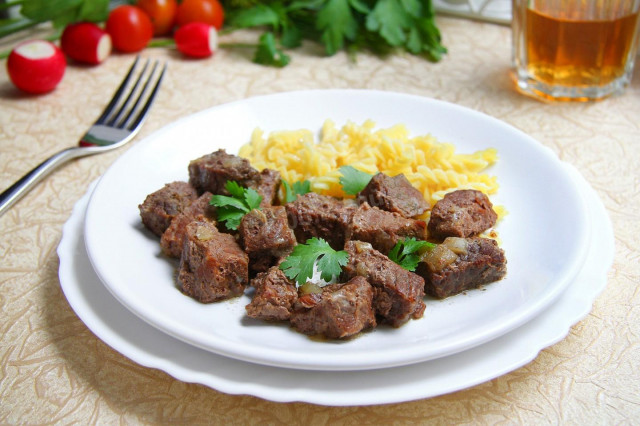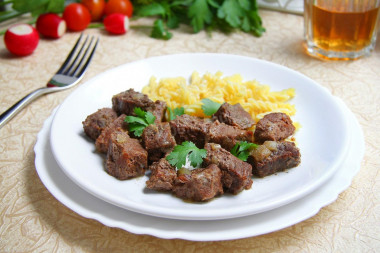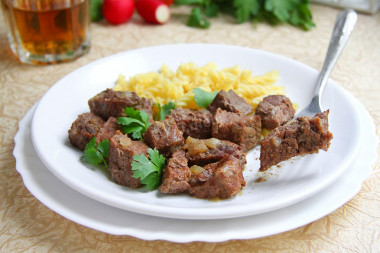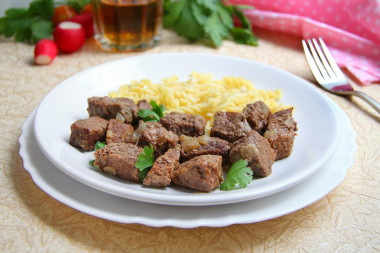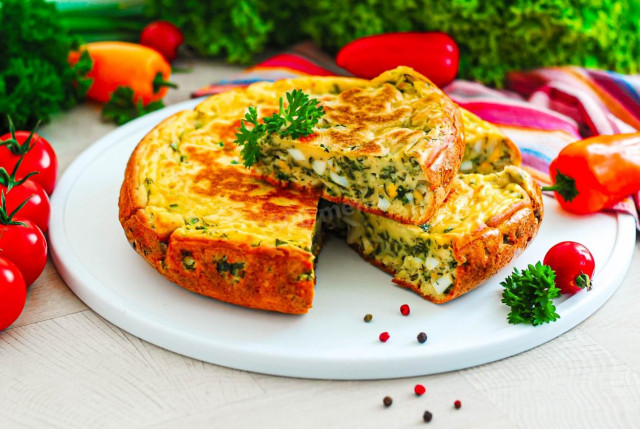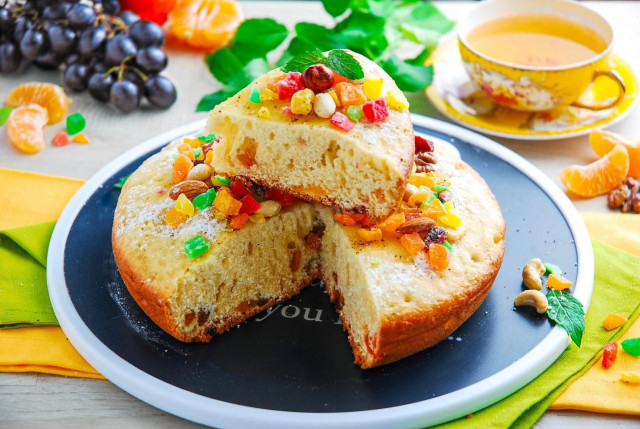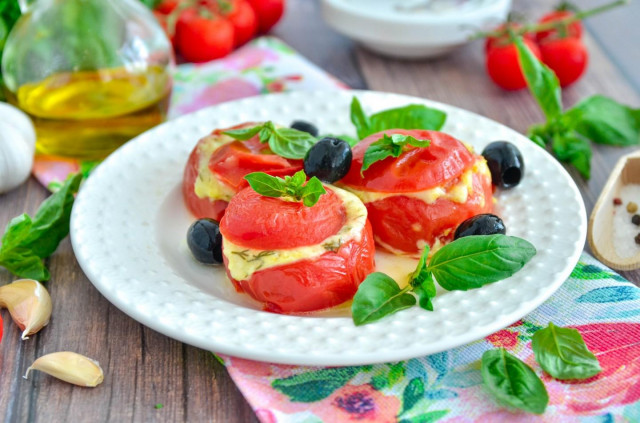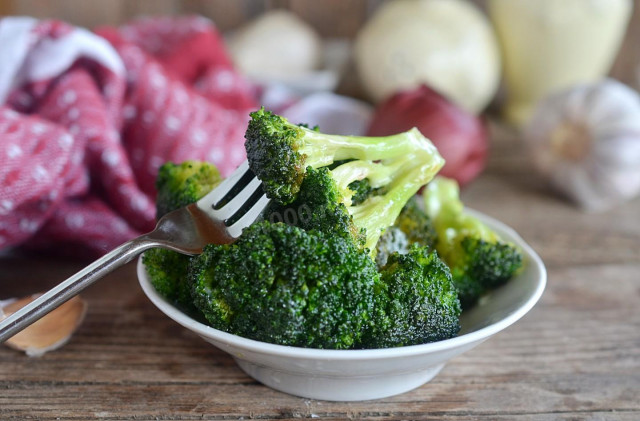Composition / ingredients
Step-by-step cooking
Step 1:
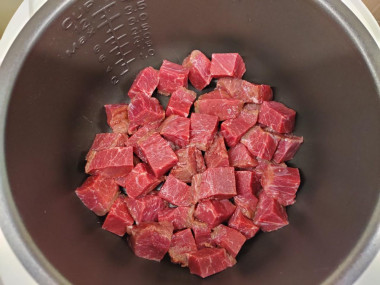
Any boneless beef pulp suitable for baking or frying is suitable for cooking this dish. Rinse the meat under running water and remove the tendons and excess fat, if any. Cut the beef into medium-sized portions. The bowl of the slow cooker in this recipe does not need to be pre-lubricated with anything. Just transfer the sliced beef into it.
Step 2:
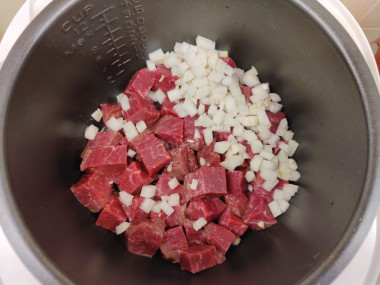
Peel the onion from the husk. I preferred to chop the onion with a medium cube. But you can also cut it into thin strips. And if you chop the onion as finely as possible, it will be almost indistinguishable in the finished dish. It is better to use white or yellow onions. Red (or purple) will look less advantageous in the finished dish.
Step 3:
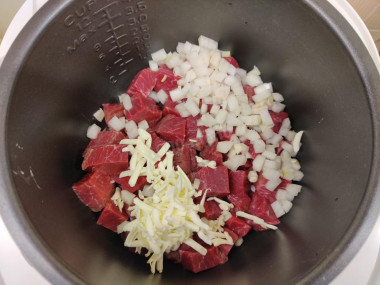
Grate the butter on a coarse grater and transfer to the bowl of a slow cooker. Instead of using a grater, you can simply cut the butter with a knife into smaller pieces. Or you can put it in a whole piece. There will be absolutely no difference. The oil can be used both at room temperature and fresh from the refrigerator.
Step 4:
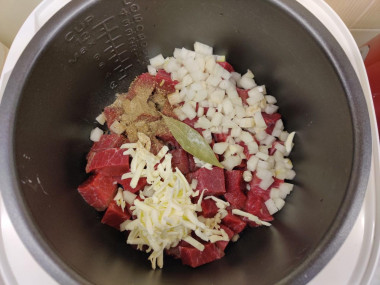
It's time for seasonings and spices. Salt the meat to taste, add a small bay leaf and ground hot pepper. At this stage, you can add any of your favorite spices or fresh herbs to the dish. If you are going to use a ready-made spice mixture, check if there is no salt in its composition. Consider this point, so as not to over-salt the finished dish.
Step 5:
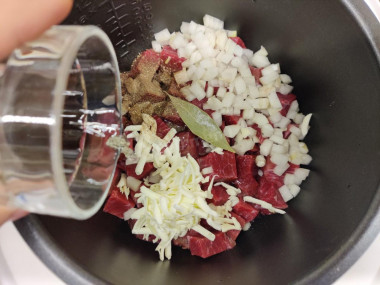
Pour filtered water into the bowl of the slow cooker so that it covers the meat, and simmer the beef for about an hour and a half on the "Quenching" program. If you have a pressure cooker, then 40 minutes at low pressure will be enough. But it is better to check the instructions, since everyone has different slow cookers. But even if after the specified time the beef is still too tough, you can put it out for another twenty minutes until the meat is fully cooked. Beef will turn out super-soft!
Bon appetit!
Keep in mind that the cooking time and mode are indicated approximately in the recipe. All slow cookers work differently and even the same models of the same manufacturer may have their own characteristics. Before you start cooking a new dish for you in a slow cooker, carefully study the instructions for it, and then in practice try to cook dishes that are familiar to you first, and then new ones, choosing the mode and time and amount of water individually for your own technique.
Since the degree of salinity, sweetness, bitterness, sharpness, acid, burning is individual for everyone, always add spices, spices and seasonings, focusing on your taste! If you put some of the seasonings for the first time, then keep in mind that there are spices that it is especially important not to shift (for example, chili pepper).
Beef can be replaced with any other type of meat that you like best. But keep in mind that the cooking time, as well as the taste and calorie content of the dish will change. Pork and lamb tend to be fatter than beef, and chicken fillet or turkey are leaner. At the same time, the cooking time depends not only on the type of meat, but also on which part of the carcass is used and how old or young the meat is.
Caloric content of the products possible in the composition of the dish
- Onion - 41 kcal/100g
- Bay leaf - 313 kcal/100g
- Butter 82% - 734 kcal/100g
- Amateur unsalted butter - 709 kcal/100g
- Unsalted peasant butter - 661 kcal/100g
- Peasant salted butter - 652 kcal/100g
- Melted butter - 869 kcal/100g
- Salt - 0 kcal/100g
- Water - 0 kcal/100g
- Ground hot pepper - 21 kcal/100g
- Beef fillet (steak) - 189 kcal/100g
- Beef fillet (roast beef) - 381 kcal/100g

